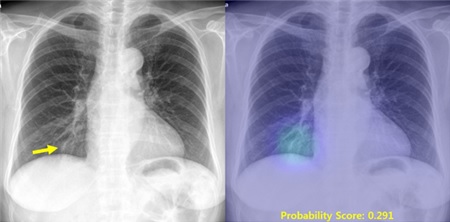Researchers at Seoul National University Hospital and Lunit, a medical artificial intelligence (AI) company, have completed an AI-assisted diagnostic system which can detect all four major chest diseases using an X-ray image, the hospital said Monday.

The developed AI system analyzes the patient’s chest X-ray image, displays the region with abnormal findings, and presents the probability as a probability value. With the aid of software, medical staff can make imaging diagnosis easier.
Early and accurate diagnoses of the four major chest diseases -- lung cancer, pulmonary tuberculosis, pneumonia, and pneumothorax – are essential as they have a high incidence and mortality rate worldwide.
The team, led by Professor Park Chang-min of the department of radiology, used a total of 98,621 chest x-ray image data, including the images for the four major chest diseases, to develop the AI system.
Afterward, the team evaluated the performance of the developed software at five institutions –SNUH, Seoul National University Boramae Hospital, Gangdong Kyung Hee University Hospital, Eulji University Medical Center and Centre Hospitalier Universitaire de Grenoble in France.
The diagnostic accuracy of the external agency evaluation was very good with an average accuracy of 97 percent or more.
In a comparative assessment with 15 doctors, including radiologists, the team’s software showed higher diagnostic accuracy than most doctors while the doctor’s diagnostic ability increased by 9 percent when they received assistance from the AI software.
“The existing system, which could only identify pulmonary nodules, was insufficient to be used in the actual treatment field where there was a need to diagnose other diseases at the same time,” Professor Park said. “The developed system can be used more effectively in clinical practice as it can confirm the four major chest diseases at once.”
JAMA Network Open published the results of the research.

